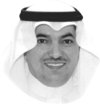How Yemen’s radicalized children can be rehabilitated

I recently participated in a nine-day International Workshop on Leadership and Security organized by Pakistan’s National Defence University in Islamabad. During the workshop, lectures were delivered on various subjects related to leadership and security, as well as Pakistan’s position on regional and global issues, and the country’s economic and military ties with regional countries.
The workshop’s itinerary allowed for meetings with political and military leaders, including the chairman of the joint chiefs of staff committee, the chief of staff of Pakistan’s army, and even a meeting with Pakistani Prime Minister Imran Khan. Also a visit was made to Pakistan’s air and naval force command centers.
In addition to these meetings, the participants visited Gwadar Port, overlooking the Gulf of Oman, which China is developing and transforming into an economic distribution hub as part of its Belt and Road Initiative. The participants were also shown the location of the oil refinery that is set to be established by Saudi Arabia as part of the Kingdom’s investments in this promising port.
The participants also paid a visit to the Khyber Pass area on the Pakistani-Afghan border, visiting the military command headquarters there as well as visiting the Swat Valley. Swat District is known globally due to the activities of terrorist groups there. In recent years, the Pakistan Army has been carrying out military operations to purge the area of terrorists. A visit was made by the participants to a unique nongovernmental organization, the Sabawoon Rehabilitation Centre based in Mingora. This is run and founded by the Pakistan Army with the help of the Hum Pakistani Foundation and UNICEF.
In 2009, during the conflict between the army and Taliban militants in the Swat Valley, 230 boys were apprehended by the army and taken to the rehabilitation center. According to research, the boys had been manipulated or brainwashed into becoming suicide bombers or militants. The Sabawoon project has been identified as an example of best practice for the successful rehabilitation, deradicalization and reintegration of former militants into society.
The center recognizes that individuals coming into the program are ultimately victims of severe emotional and psychological trauma. More specifically, formerly indoctrinated individuals have often gone through long struggles over their personal identity, suffered extreme neglect and witnessed, as well as engaged in, high levels of violence. It assists these individuals with practical rehabilitation and their readjustment to everyday life. This includes equipping them with critical thinking skills, identifying a set of shared values to live by and setting up their social involvement in local communities.
Maybe it is too early at present to establish a program to deradicalize children in Yemen, but certainly a plan for such a program should be initiated.
Dr. Mohammed Al-Sulami
Sabawoon also ensures secure support networks within families, the wider community and among elders, who the concerned individuals can rely upon for ongoing advice and guidance. Again, this reinforces a sense of belonging and cohesion that blocks any opportunity for an individual to return to a damaging and extremist lifestyle.
Since it began its work in 2009, the center has rehabilitated 229 children, successfully reintegrating 180 young men into society, with no relapses to date. It is notable that the annual cost for each child in the center does not exceed $2,400, or $200 per month, according to the presentation given by its administration.
The idea of the center bears a striking resemblance to the Mohammed bin Nayef Counseling and Care Center in Riyadh, which is another successful project in the rehabilitation of individuals previously involved in extremist activities. The primary difference between the two centers is that Sabawoon focuses on children aged between eight and 18, with most of its staff members being female, while the Saudi center focuses mostly on adults and most of its staff members are male.
While the workshop participants heard about the Sabawoon Rehabilitation Center during their visit, the Saudi initiative was cited as a positive example. While listening to the staff talking about the center, I thought of the children who have been recruited and brainwashed by the Houthi militias in Yemen. They have been forcibly conscripted and made to engage in fighting, rather than go to school and enjoy their childhood with positive plans for the future.
Maybe it is too early at present to establish a program to deradicalize children in Yemen, but certainly a plan for such a program should be initiated. Those radicalized children should be targeted and rehabilitated after the areas currently under the control of the Houthis have been liberated. Also, in the areas already liberated, work should be done to rehabilitate children and to purge these areas of extremist ideologies that could promote future extremism and terrorism before it is too late.
A number of organizations, such as the UN, UNICEF, Save the Children International, the King Salman Humanitarian Aid and Relief Centre, and International Humanitarian Relief, should begin to plan this humanitarian activity, which will prevent any future schemes by Houthi militias to exploit vulnerable children and use them in their destructive projects.
- Dr. Mohammed Al-Sulami is Head of the International Institute for Iranian Studies (Rasanah). Twitter: @mohalsulami








































